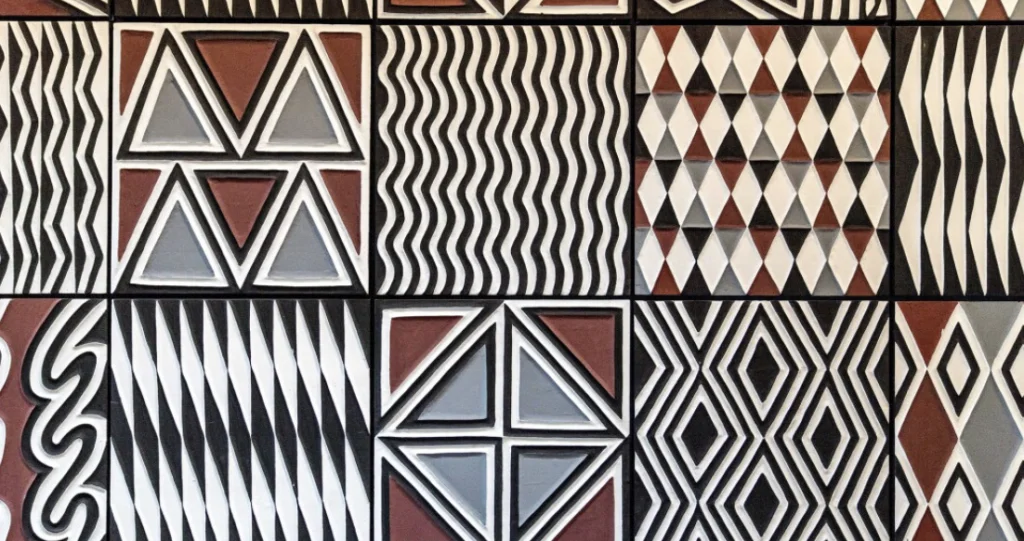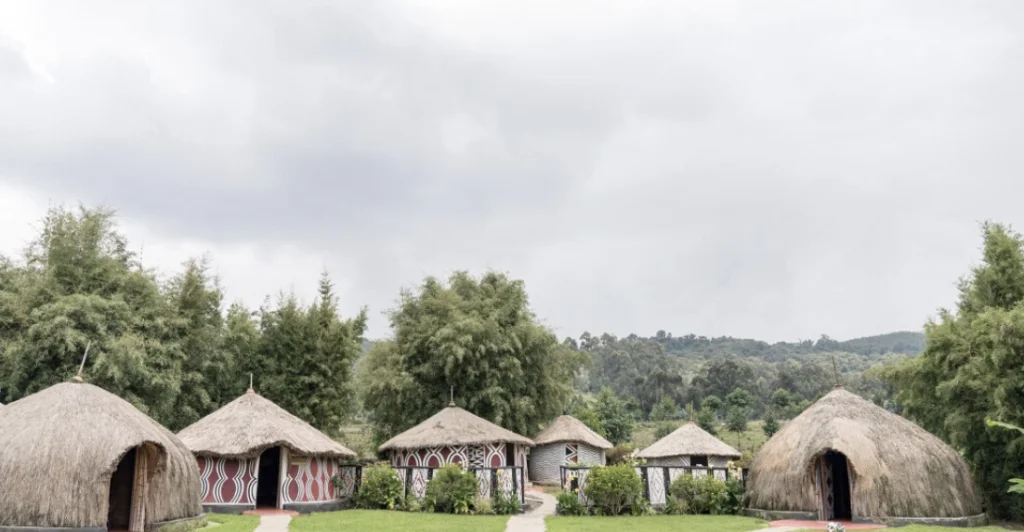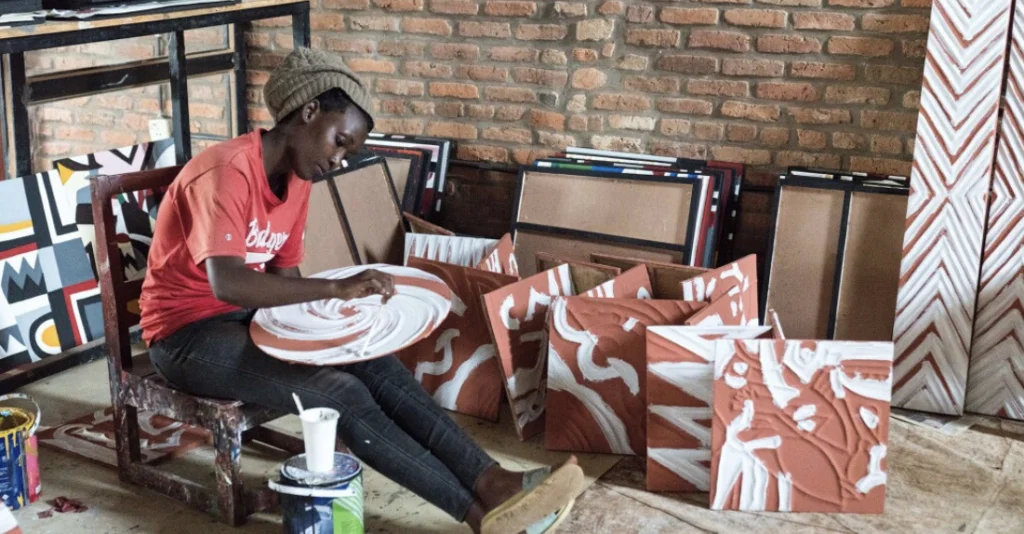Imigongo is a well known art form in Rwanda traditionally made with cow dung that dates back to the 18th century. It is believed that this technique was invented by Prince Kakira, son of King Kemenyi of Gisaka and has its origin in the province of Kibungo close to the Tanzanian border.

When the prince created imigongo, he decorated his palace walls with it and then taught the local women technique which they have passed down through their generations. The process of creating these images starts by sculpting a malleable paste of cow dung onto a flat wooden board. The dung is mixed with ash to reduce the offensive odor and kill bacteria. The desired designs are then finger traced onto the mixture to create an embossed look after which it is left to harden and painted with organic dyes afterwards. The traditional colours typical used include; black, white, red, grey and beige-yellow. In recent times, as the craft grows, the women began to experiment with more colors as well as modern and innovative images that convey the spirit of the Rwandan landscape and its people.

The imigongo art form was on the brink of disappearing in 1994 during the genocide, the tragedy that tore the country apart. Now, riding the wave of cultural resurgence, 25 years later the revival of imigongo stands as a testament to the resilience of Rwandan people.
Following the genocide, the community was shattered and many other Rwandan women were scrambling to find a way to provide for themselves after the war. Kakira Cooperative was formed to re-establish the art form and serve as a means for these women to support each other. They saw imigongo as a way of healing the wounds left by the war and adorned their homes with it. Fortunately, it began to sell and the commercial potential has had a massive impact in the lives of these women.

Beyond the financial gains, the Kakira Cooperative aims to preserve the centuries-old art form and teach the younger generation the technique because talent, skill and precision is required to make good imigongo. The women of Kakira cooperative work as a collective such that there is no single artist for each piece so for every design stage, there is always a different artist.


